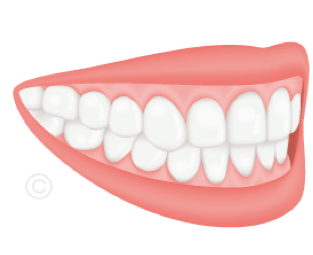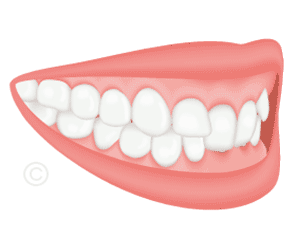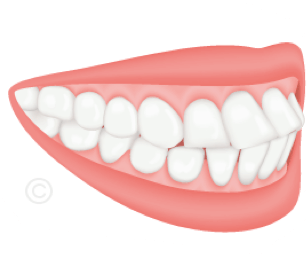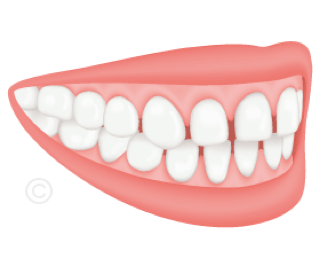- ADENTICS
- Team
- Jobs
- Orthodontic Treatment
- The ADENTICS Treatment Concept
- Orthodontic for Children
- Orthodontic for Teens
- Orthodontic for Adults
- Business Dental Correction
- Straight Teeth for Your Wedding
- Diagnosis and Course of Treatment
- Dysgnathia are malformations
- 3D Diagnostics
- Combining Orthodontic and Maxillofacial Therapy
- Snoring Therapy
- Speech Therapy
- Costs and Financing
- Expertise and Second Opinion
- FAQ’s
- Dental Braces
- Contact
- ACADEMY
- ADENTICS
Berlin - Mitte - 030 - 311 74 74 0
- ADENTICS
Berlin - Lichtenrade - 030 - 76 76 60 30
- ADENTICS
Berlin - Tegeler Hafen - 030 - 40 57 105 0
- ADENTICS
Berlin - Karow - 030 - 86 32 451 0
- ADENTICS
Berlin - Lichtenberg - 030 - 814 58 77 0
- ADENTICS
Blankenfelde - Mahlow - 03379 - 31 499 0
- ADENTICS
Teltow - 03328 - 33 95 13 0
- ADENTICS
Schulzendorf - 033762 - 46 25 50
- ADENTICS
Berlin - Mitte - Book appointment
- ADENTICS
Berlin - Lichtenrade - Book appointment
- ADENTICS
Berlin - Tegeler Hafen - Book appointment
- ADENTICS
Berlin - Karow - Book appointment
- ADENTICS
Berlin - Lichtenberg - Book appointment
- ADENTICS
Blankenfelde - Mahlow - Book appointment
- ADENTICS
Teltow - Book appointment
- ADENTICS
Schulzendorf - Book appointment
- ADENTICS
Berlin - Mitte - 030 - 311 74 74 0
- Consultation hours & Contact
- Leipziger Platz 7
10117 Berlin - To the practice tour
- Book appointment
- ADENTICS
Berlin - Lichtenrade - 030 - 76 76 60 30
- Consultation hours & Contact
- Goltzstraße 7
12307 Berlin - To the practice tour
- Book appointment
- ADENTICS
Berlin - Tegeler Hafen - 030 - 40 57 105 0
- Consultation hours & Contact
- Schloßstraße 26
13507 Berlin - To the practice tour
- Book appointment
- ADENTICS
Berlin - Karow - 030 - 86 32 451 0
- Consultation hours & Contact
- Bucher Chaussee 5
13125 Berlin - To the practice tour
- Book appointment
- ADENTICS
Blankenfelde - Mahlow - 03379 - 31 499 0
- Consultation hours & Contact
- Am Bahnhof 4
15831 Mahlow - To the practice tour
- Book appointment
- ADENTICS
Teltow - 03328 - 33 95 13 0
- Consultation hours & Contact
- Neißestraße 2
14513 Teltow - To the practice tour
- Book appointment
- ADENTICS
Schulzendorf - 033762 - 46 25 50
- Consultation hours & Contact
- Richard-Israel Straße 3
15732 Schulzendorf - To the practice tour
- Book appointment
- ADENTICS
Berlin - Lichtenberg - 030 - 814 58 77-0
- Consultation hours & Contact
- Möllendorffstraße 104/105
10367 Berlin - Book appointment
| ADENTICS Berlin - Mitte |
|
|---|---|
| Opening hours | |
| Monday | 9am to 7pm |
| Thuesday | 9am to 6pm |
| Wednesday | 9am to 7pm |
| Thursday | 9am to 7pm |
| Friday | 9am to 5:30pm |
| ADENTICS Blankenfelde - Mahlow |
|
|---|---|
| Opening hours | |
| Monday | 9am to 7pm |
| Tuesday | 9am to 7pm |
| Wednesday | 11am to 5pm |
| Thursday | 9am to 7pm |
| ADENTICS Berlin - Lichtenrade |
|
|---|---|
| Opening hours | |
| Monday | 9am to 7pm |
| Tuesday | 9am to 7pm |
| Wednesday | 9am to 7pm |
| Thursday | 9am to 7pm |
| Friday | 9am to 5pm |
| ADENTICS Berlin - Teltow |
|
|---|---|
| Opening hours | |
| Monday | 9am to 7pm |
| Tuesday | 9am to 7pm |
| Wednesday | 9am to 7pm |
| Thursday | 9am to 6pm |
| ADENTICS Berlin - Schulzendorf |
|
|---|---|
| Opening hours | |
| Monday | 9am to 7pm |
| Tuesday | 9am to 7pm |
| Wednesday | 9am to 7pm |
| Thursday | 9am to 7pm |
| ADENTICS Berlin - Tegeler Hafen |
|
|---|---|
| Opening hours | |
| Monday | 9:00 a.m. to 1:00 p.m. 2:00 p.m. to 7:00 p.m. |
| Tuesday | 9:00 a.m. to 1:00 p.m. 2:00 p.m. to 7:00 p.m. |
| Wednesday | 9:00 a.m. to 1:00 p.m. 2:00 p.m. to 7:00 p.m. |
| Thursday | 7:45am to 12:00 noon 1:00 p.m. to 5:00 p.m. |
| ADENTICS Berlin - Karow |
|
|---|---|
| Opening hours | |
| Monday | 9:00 a.m. to 1:00 p.m. 2:00 p.m. to 7:00 p.m. |
| Tuesday | 9:00 a.m. to 1:00 p.m. 2:00 p.m. to 7:00 p.m. |
| Wendesday | 9:00 a.m. to 1:00 p.m. 2:00 p.m. to 7:00 p.m. |
| Thursday | 9:00 a.m. to 1:00 p.m. 2:00 p.m. to 6:00 p.m. |
| Friday | 9:00 a.m. to 1:00 p.m. 2:00 p.m. to 5:00 p.m. |
| ADENTICS Berlin - Lichtenberg |
|
|---|---|
| Opening hours | |
| Monday | 12:00 noon to 6:30 p.m. |
| Tuesday | 9:00 a.m. to 12:00 noon 13:00 p.m. to 5:30 p.m. |
| Wendesday | 9:00 a.m. to 12:00 noon 1:00 p.m. to 6:30 p.m. |
| Thursday | 9:00 a.m. to 12:00 noon 2:00 p.m. to 6:30 p.m. |
| Friday | 9:00 a.m. to 12:00 noon 1:00 p.m. to 5:00 p.m. |
Malocclusions
of the Teeth and Jaw
Dysgnathia are tooth and jaw misalignments.

Neutral occlusion
The following malocclusions (Dysgnathia) may occur alone or in combination with each other.
-

Overbite
The overbite (distal occlusion, retrusive occlusion – Angle Class II) is the most common form of malocclusion. In retrusive occlusion the lower jaw is too far back, leaving a large gap between the incisors.
Possible consequences:
- Deep bite: The incisors of the lower jaw grow into the gums and injure the palatal mucosa.
- Injury:The risk of injury for the incisors (e.g. during physical activity) is great, because the lips are not in position to protect the teeth and the upper teeth cannot rest on the lower teeth.
- Crowding: The dental arches collapse because they do not support each other.
- Forced bite/Mandibular joint pain: Through crowding or through the upper teeth overlaying the lower ones, the jaw can be subjected to excessive stress. The result can be popping, or even the dreaded lockjaw associated with considerable pain.
- Dental attrition: Since the teeth do not mesh cleanly, they are subjected to excessive wear. It is not unusual to see young adults with crowns that are strongly chewed down.
-

Closed Bite
The closed bite (Angle Class II, Div. 2) is a special form of retrusive occlusion. In a closed bite some of the front upper teeth are typically tilted backward and the rest tilted forward. Possible consequences:
Possible consequences:
- Deep bite: The incisors of the lower jaw grow into the gums and injure the palatal mucosa.
- Injury: The risk of injury for the incisors (e.g. during physical activity) is great, because the lips are not in position to protect the teeth and the upper teeth cannot rest on the lower teeth.
- Crowding: The dental arches collapse because they do not support each other.
- Forced bite/Mandibular joint pain: Through crowding or through the upper teeth overlaying the lower ones, the jaw can be subjected to excessive stress. The result can be popping, or even the dreaded lockjaw associated with considerable pain.
- Dental attrition: Since the teeth do not mesh cleanly, they are subjected to excessive wear. It is not unusual to see young adults with crowns that are strongly chewed down on the tilted-back front teeth.
-

Underbite
The underbite is a somewhat rarer form of malocclusion. Here the lower jaw protrudes in front of the upper jaw. Sometimes the edges of the incisors meet; or the lower incisors are even in front of the upper ones, which is called a “crossbite”.
Possible consequences:
- Crossbite: The edges of the front teeth close together, leading to considerable attrition, or even miss each other completely in the wrong order. This form of malocclusion leads to extremely rapid attrition of tooth enamel.
- Forced bite/Mandibular joint pain: Through crowding or through the upper teeth overlaying the lower ones, the jaw can be subjected to excessive stress. The result can be popping, or even the dreaded lockjaw associated with considerable pain.
- Gaps: The rows of teeth are often interrupted by gaps.
- Dental attrition: Since the teeth do not mesh cleanly, they are subjected to excessive wear. It is not unusual to see young adults with crowns that are strongly chewed down.
- Deep bite: The incisors of the lower jaw grow into the gums and injure the palatal mucosa.
-

Crossbite
In a lateral crossbite the lower molars protrude over the upper molars. The crossbite can occur on one side, on both sides, or even in the front teeth (see underbite).
Possible consequences:
- Asymmetrical facial developmentcht: Untreated over years, a one-sided crossbite leads to deformed growth of the lower jaw toward the crossbite side. The dental arches no longer match up.
- Dental attrition: Since the teeth do not mesh cleanly, they are subjected to excessive wear. It is not unusual to see young adults with crowns that are strongly chewed down.
- Forced bite/Mandibular joint pain: Through crowding or through the upper teeth overlaying the lower ones, the jaw can be subjected to excessive stress. The result can be popping, or even the dreaded lockjaw associated with considerable pain.
-

Crowding
When the teeth are crowded, the front teeth are displaced and or crossed, sometimes so severely that some teeth are located behind the others in the same row.
Possible consequences:
- Increased risk of dental decay: Since it is very difficult to clean the teeth, cavities are quite common, or at least inflammation of the gums and discoloration of the teeth.
- Receding gums: Since the teeth migrate out from the bones, over years extremely pronounced gum recession may appear.
- Dental attrition: Since the teeth do not mesh cleanly, they are subjected to excessive wear. It is not unusual to see young adults with crowns that are strongly chewed down.
-

Open bite
An open bite means that the upper and lower incisors do not come into contact with each other even when the jaw is closed. In extreme forms only the back molars touch when the jaw is closed.
Possible consequences:
- Long face syndrome:Through the vertical growth of the lower jaw the face may appear excessively long.
- Dental attrition: Since only a few of the teeth come into contact with each other, these few are subjected to excessive wear. It is not unusual to see young adults with crowns that are strongly chewed down.
- Mandibular joint pain: Since only a few of the teeth participate in chewing, the mandibular joint has to make up for a great deal of power. Untreated open bites very frequently lead to mandibular joint pain.
- Biting problems: Such patients cannot bite off foods like a leaf of lettuce or a thin slice of ham. Their chewing capacity is significantly reduced.
-

Protrusion
Bialveolar protrusion designates the “tilting out” of the front teeth. In this case either the molars must be moved back so that the front teeth can be returned to the jaw bone, or healthy teeth must be extracted. In adults this dental movement often begins suddenly when periodontis occurs (inflammation of the gums with bone loss).
Possible consequences:
- Gaps: Gaps often appear in the rows of teeth.
- Receding gums: Since the teeth migrate out from the bones, over years extremely pronounced gum recession may appear.
-

Gaps
Rows of teeth with gaps are detrimental to facial appearance. Gaps due to tooth loss should be promptly remedied with a bridge or an implant, since otherwise the adjacent teeth may tilt into the gap, making further dental treatment difficult without first opening the gaps through orthodontics.
Possible consequences:
- Tooth migration: Uncontrolled displacement of the teeth may take place, since the teeth no longer support each other.
- Receding gums: Since the teeth migrate out from the bones, over years extremely pronounced gum recession may appear.
- Dental attrition: Since the teeth do not mesh cleanly, they are subjected to excessive wear. It is not unusual to see young adults with crowns that are strongly chewed down.
- Posterior gaps: Without treatment, these can lead to a significant lengthening of the opposite tooth, which then impairs the bite.
On us
you can
trust!
HIER FINDEN SIE UNS.
Berlin - Mitte
Berlin - Lichtenrade
Berlin - Tegel
Blankenfelde - Mahlow
Teltow
Schulzendorf
BUCHEN SIE IHREN TERMIN ONLINE.
Wir freuen uns auf Ihren Besuch.
Rufen Sie uns an:
BERLIN
BRANDENBURG
ADENTICS – Die Kieferorthopäden
Invisalign in Berlin & Brandenburg

-
Orthodontists BERLIN - MITTE
Leipziger Platz 7, 10117 Berlin
-
Orthodontists BERLIN - LICHTENRADE
Tempelhof Goltzstraße 39, 12307 Berlin
-
Orthodontists BLANKENFELDE - MAHLOW
Am Bahnhof 4, 15831 Mahlow
-
Orthodontists TELTOW
Neißestraße 2, 14513 Teltow
nahe Kleinmachnow, Stahnsdorf ...
-
Orthodontists SCHULZENDORF
Richard-Israel-Straße 3, 15732 Schulzendorf
-
Orthodontists TEGELER - HAFEN
Schloßstraße 26, 13507 Berlin
Direkt an der U-Bahn Alt-Tegel und Borsigturm
-
Orthodontists
BERLIN - KAROWBucher Chaussee 5, 13125 Berlin
-
Orthodontists
BERLIN - LICHTENBERGMöllendorffstraße 104/105, 10367 Berlin
WE LOVE TO SEE YOU SMILE
- ADENTICS - Die Kieferorthopäden
-
Imprint
-
Data Protection
*Focus Top Physician Award for the twelfth time for ADENTICS orthodontist Dr. Ralf Müller-Hartwich. Orthodontist Dr. Woo-Ttum Bittner for the fourth time.
The quality of medical services cannot be fully determined by laboratory tests and figures, so the "FOCUS Top Physician Award" is also based on subjective assessments such as recommendations by other physicians and patient evaluations.












